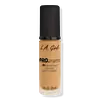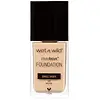What's inside
What's inside
 Key Ingredients
Key Ingredients

 Benefits
Benefits

 Concerns
Concerns

 Ingredients Side-by-side
Ingredients Side-by-side

Water
Skin ConditioningDimethicone
EmollientCyclopentasiloxane
EmollientAluminum Starch Octenylsuccinate
AbsorbentGlycerin
HumectantMethyl Methacrylate Crosspolymer
Silica
AbrasivePEG-10 Dimethicone
Skin ConditioningPhenoxyethanol
PreservativeDimethicone/Vinyl Dimethicone Crosspolymer
Skin ConditioningDisteardimonium Hectorite
StabilisingCaprylyl Glycol
EmollientAlumina
AbrasiveEthylhexylglycerin
Skin ConditioningPanthenol
Skin ConditioningDisodium EDTA
Tocopheryl Acetate
AntioxidantHelianthus Annuus Seed Oil
EmollientTrimethoxycaprylylsilane
SmoothingTriethoxycaprylylsilane
Talc
AbrasiveParfum
MaskingButylphenyl Methylpropional
PerfumingLinalool
PerfumingHexyl Cinnamal
PerfumingTocopherol
AntioxidantIron Oxides
CI 77891
Cosmetic ColorantWater, Dimethicone, Cyclopentasiloxane, Aluminum Starch Octenylsuccinate, Glycerin, Methyl Methacrylate Crosspolymer, Silica, PEG-10 Dimethicone, Phenoxyethanol, Dimethicone/Vinyl Dimethicone Crosspolymer, Disteardimonium Hectorite, Caprylyl Glycol, Alumina, Ethylhexylglycerin, Panthenol, Disodium EDTA, Tocopheryl Acetate, Helianthus Annuus Seed Oil, Trimethoxycaprylylsilane, Triethoxycaprylylsilane, Talc, Parfum, Butylphenyl Methylpropional, Linalool, Hexyl Cinnamal, Tocopherol, Iron Oxides, CI 77891
Isododecane
EmollientCyclopentasiloxane
EmollientWater
Skin ConditioningGlycerin
HumectantCyclohexasiloxane
EmollientDimethicone
EmollientButylene Glycol
HumectantPEG-10 Dimethicone
Skin ConditioningDisteardimonium Hectorite
StabilisingAdipic Acid/Neopentyl Glycol Crosspolymer
Caprylyl Glycol
EmollientSilica
AbrasiveSodium Chloride
MaskingSorbitan Sesquioleate
EmulsifyingLecithin
EmollientPolyglyceryl-4 Isostearate
EmulsifyingCetyl PEG/PPG-10/1 Dimethicone
EmulsifyingHexyl Laurate
EmollientPolysilicone-11
Isopropyl Titanium Triisostearate
EmollientLaureth-12
EmulsifyingPhenoxyethanol
PreservativeEthylhexylglycerin
Skin ConditioningTitanium Dioxide
Cosmetic ColorantMica
Cosmetic ColorantIron Oxides
Isododecane, Cyclopentasiloxane, Water, Glycerin, Cyclohexasiloxane, Dimethicone, Butylene Glycol, PEG-10 Dimethicone, Disteardimonium Hectorite, Adipic Acid/Neopentyl Glycol Crosspolymer, Caprylyl Glycol, Silica, Sodium Chloride, Sorbitan Sesquioleate, Lecithin, Polyglyceryl-4 Isostearate, Cetyl PEG/PPG-10/1 Dimethicone, Hexyl Laurate, Polysilicone-11, Isopropyl Titanium Triisostearate, Laureth-12, Phenoxyethanol, Ethylhexylglycerin, Titanium Dioxide, Mica, Iron Oxides
 Reviews
Reviews

Ingredients Explained
These ingredients are found in both products.
Ingredients higher up in an ingredient list are typically present in a larger amount.
Caprylyl Glycol is a humectant and emollient, meaning it attracts and preserves moisture.
It is a common ingredient in many products, especially those designed to hydrate skin. The primary benefits are retaining moisture, skin softening, and promoting a healthy skin barrier.
Though Caprylyl Glycol is an alcohol derived from fatty acids, it is not the kind that can dry out skin.
This ingredient is also used as a preservative to extend the life of products. It has slight antimicrobial properties.
Learn more about Caprylyl GlycolCyclopentasiloxane, or D5, is a silicone used to improve texture of products and trap moisture.
D5 is considered lightweight and volatile. Volatile means it evaporates quickly after application. Once evaporated, D5 leaves a thin barrier that helps keep skin hydrated.
It is also an emollient. Emollients help soften the skin and prevent water loss. Silicones create a silky texture in products. D5 helps other ingredients become more spreadable.
Studies show D5 is safe to use in skincare products. We recommend speaking with a skincare professional if you have concerns.
Learn more about CyclopentasiloxaneDimethicone is a type of synthetic silicone created from natural materials such as quartz.
What it does:
Dimethicone comes in different viscosities:
Depending on the viscosity, dimethicone has different properties.
Ingredients lists don't always show which type is used, so we recommend reaching out to the brand if you have questions about the viscosity.
This ingredient is unlikely to cause irritation because it does not get absorbed into skin. However, people with silicone allergies should be careful about using this ingredient.
Note: Dimethicone may contribute to pilling. This is because it is not oil or water soluble, so pilling may occur when layered with products. When mixed with heavy oils in a formula, the outcome is also quite greasy.
Learn more about DimethiconeDisteardimonium Hectorite comes from the clay mineral named hectorite. It is used to add thickness to a product.
It can also help stabilize a product by helping to disperse other ingredients.
Hectorite is a rare, white clay mineral.
Learn more about Disteardimonium HectoriteEthylhexylglycerin (we can't pronounce this either) is commonly used as a preservative and skin softener. It is derived from glyceryl.
You might see Ethylhexylglycerin often paired with other preservatives such as phenoxyethanol. Ethylhexylglycerin has been found to increase the effectiveness of these other preservatives.
Glycerin is already naturally found in your skin. It helps moisturize and protect your skin.
A study from 2016 found glycerin to be more effective as a humectant than AHAs and hyaluronic acid.
As a humectant, it helps the skin stay hydrated by pulling moisture to your skin. The low molecular weight of glycerin allows it to pull moisture into the deeper layers of your skin.
Hydrated skin improves your skin barrier; Your skin barrier helps protect against irritants and bacteria.
Glycerin has also been found to have antimicrobial and antiviral properties. Due to these properties, glycerin is often used in wound and burn treatments.
In cosmetics, glycerin is usually derived from plants such as soybean or palm. However, it can also be sourced from animals, such as tallow or animal fat.
This ingredient is organic, colorless, odorless, and non-toxic.
Glycerin is the name for this ingredient in American English. British English uses Glycerol/Glycerine.
Learn more about GlycerinPeg-10 Dimethicone is silicone with conditioner and emulsifier properties. It mostly acts as an emollient in skincare and and humectant in haircare.
According to the manufacturer, acidic formulations decrease the stability of this ingredient. It works best in neutral or near neutral formulations.
Phenoxyethanol is a preservative that has germicide, antimicrobial, and aromatic properties. Studies show that phenoxyethanol can prevent microbial growth. By itself, it has a scent that is similar to that of a rose.
It's often used in formulations along with Caprylyl Glycol to preserve the shelf life of products.
Silica, also known as silicon dioxide, is a naturally occurring mineral. It is used as a fine, spherical, and porous powder in cosmetics.
Though it has exfoliant properties, the function of silica varies depending on the product.
The unique structure of silica enhances the spreadability and adds smoothness, making it a great texture enhancer.
It is also used as an active carrier, emulsifier, and mattifier due to its ability to absorb excess oil.
In some products, tiny microneedles called spicules are made from silica or hydrolyzed sponge. When you rub them in, they lightly polish away dead skin layers and enhance the penetration of active ingredients.
Learn more about SilicaWater. It's the most common cosmetic ingredient of all. You'll usually see it at the top of ingredient lists, meaning that it makes up the largest part of the product.
So why is it so popular? Water most often acts as a solvent - this means that it helps dissolve other ingredients into the formulation.
You'll also recognize water as that liquid we all need to stay alive. If you see this, drink a glass of water. Stay hydrated!
Learn more about WaterThis ingredient is a combination of red, black, and yellow iron oxide pigments. This combination of colors is usually found in foundation, because it results in a "skin" color.